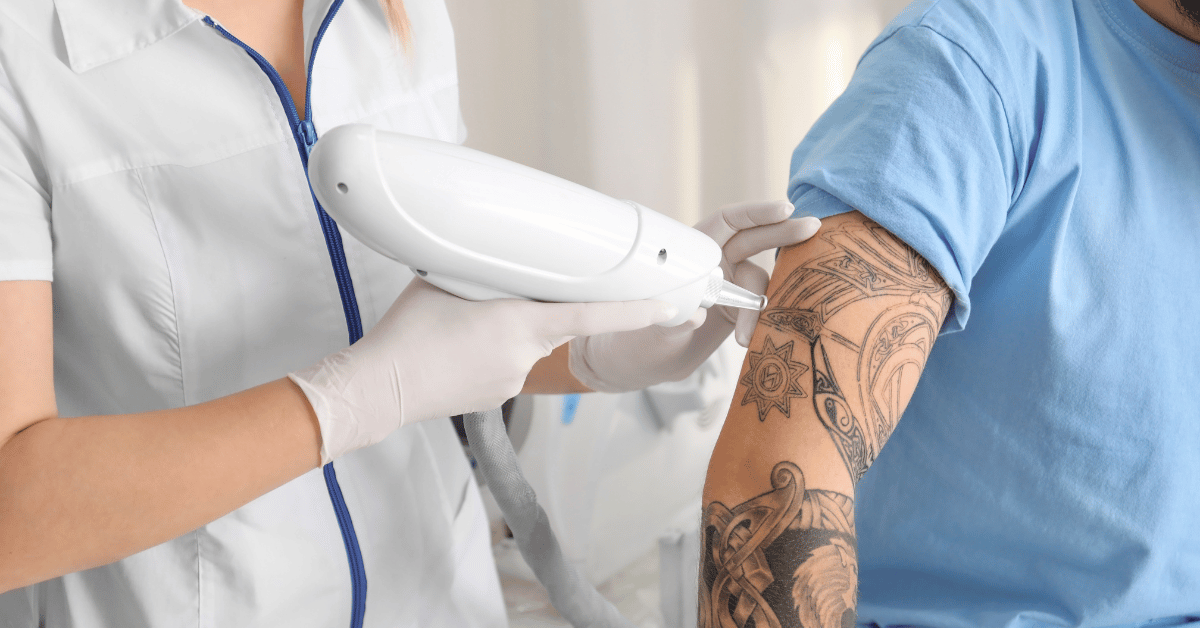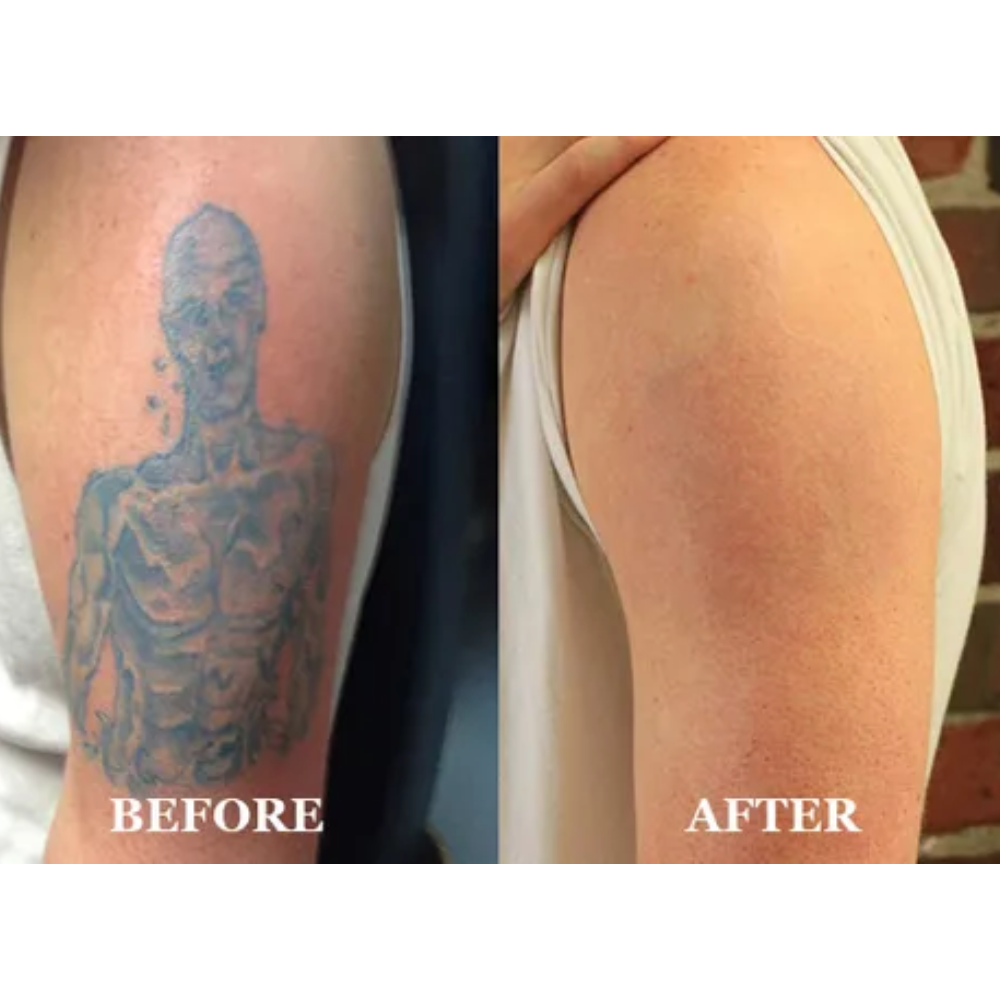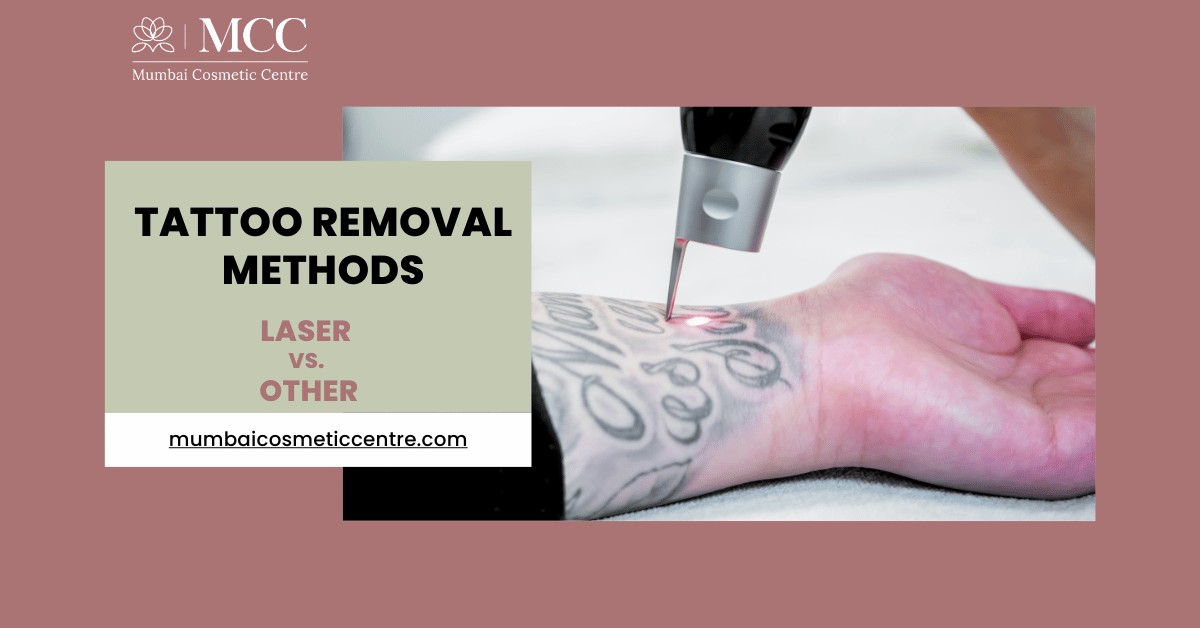Introduction
Tattoos are often seen as permanent symbols of identity, expression, or memory. But as time goes by, what once felt meaningful may lose its significance. Whether it’s a design that no longer represents you or a tattoo that didn’t turn out as expected, many people seek removal options. But are all tattoo removal methods the same? Let’s explore the science, benefits, and realities of modern tattoo removal to help you make an informed decision.
Are All Tattoo Removal Methods Created Equal?

The simple answer is no. Tattoo removal techniques have evolved significantly over the years. From painful surgeries to gentle laser therapies, each method varies in terms of effectiveness, safety, cost, and recovery time. Understanding these differences is crucial before choosing a removal technique.
Traditional Tattoo Removal Methods
Before lasers entered the picture, options were limited and often harsh:

- Dermabrasion involved sanding the skin to scrape away the ink—painful and prone to scarring.
- Salabrasion, an older method, used salt to exfoliate tattooed skin—rarely effective.
- Excision Surgery involved cutting out the tattooed area and stitching the skin—effective for small tattoos but left permanent scars.
- Tattoo Removal Creams claim to fade tattoos over time, but most lack scientific proof and can cause skin irritation without delivering real results.
These older methods are invasive and inconsistent, which makes laser tattoo removal the modern go-to solution.
How Laser Tattoo Removal Works: Science Behind the Beam
Laser tattoo removal uses high-intensity light beams to target ink pigments embedded in the skin. The energy from the laser breaks the ink into tiny particles, which the body’s immune system gradually flushes out over time.
Different wavelengths are used for different ink colors, making this method highly precise. Q-switched lasers and picosecond lasers are the most advanced options today, offering deeper penetration, faster results, and minimal damage to surrounding skin.
Laser Tattoo Removal: Is It Really Painful?

Pain is subjective, but most patients describe laser tattoo removal as mildly uncomfortable rather than painful. It’s often compared to the sensation of a rubber band snapping against the skin or a warm pinprick.
To ease discomfort, practitioners apply topical numbing creams or use cooling devices during the procedure. Plus, each session only lasts a few minutes, making the process much more tolerable than most people expect.
Laser vs. Creams, Surgery, and Dermabrasion: Which Wins?
| Method | Effectiveness | Pain Level | Scarring Risk | Downtime |
| Creams | Low | Low | Medium (irritation) | Minimal |
| Dermabrasion | Medium | High | High | High |
| Surgery | High (for small tattoos) | High | Very High | Moderate |
| Laser | High | Low to Moderate | Low | Minimal |
Laser tattoo removal clearly stands out in terms of safety, efficiency, and results. It is non-invasive, has a low risk of scarring, and is suitable for all skin types and ink colors.
Benefits of Choosing Laser for Tattoo Removal

- Precision targeting of ink pigments
- Minimal damage to surrounding skin
- Reduced scarring
- Shorter treatment sessions
- Customizable for all ink colors and skin types
- Clinically proven results
Laser removal is not just about erasing ink—it’s about doing it safely and effectively.
How Many Sessions Will You Need? What to Expect
The number of sessions depends on various factors like:
- Tattoo size and location
- Ink color and density
- Age of the tattoo
- Skin type
- Immune system strength
On average, 5 to 10 sessions spaced 4–8 weeks apart are required for optimal results. Each session gradually fades the tattoo, and visible improvements are seen after just a few sittings.
Laser Tattoo Removal: Aftercare and Recovery Tips
After your session, the treated area may feel like a mild sunburn. Here’s how to care for it:
- Keep the area clean and moisturized.
- Avoid sun exposure for a few weeks.
- Don’t pick scabs or blisters.
- Avoid hot tubs, saunas, and swimming for a few days.
Most side effects, like redness and swelling, resolve within a few days. Always follow your provider’s aftercare instructions for the best results.
Why Laser Tattoo Removal Is Worth It
While no tattoo removal method is entirely without effort or commitment, laser technology remains the safest, most effective, and least invasive option. It offers consistent results with minimal risks, making it the preferred choice among dermatologists and cosmetic experts worldwide.
If you’re considering tattoo removal, don’t settle for outdated methods. Let advanced laser treatment guide you toward clear, healthy skin once again.
Ready for a Consultation?
At Mumbai Cosmetic Centre, we provide transformative beauty treatments including face, hair, skin, IV therapies, laser procedures, and cosmetic gynaecology—all under one roof in Malad.
Dr. Shruti Shah, a pioneer in her field, brings the latest technology to every procedure, offering expertise in both aesthetic and functional treatments. From non-surgical HIFU vaginal tightening to hymenoplasties and more—Dr. Shah delivers results you can trust.
Dr. Chetan Shah, a board-certified anesthesiologist with years of hands-on experience, ensures your safety and comfort throughout the process.
📍 Mumbai Cosmetic Centre
1st Floor, Milap Apt, Swami Vivekananda Rd,
Opp. Milap PVR Cinemas, Malad West, Mumbai, Maharashtra 400064
📞 +91-7400188399
📧 mccmumbaicosmeticcentre@gmail.com
We specialize in treatments including:
- Face HIFU
- Upper Lip Hair Reduction
- Underarm & Facial Hair Reduction
- Bikini & Full Body Hair Reduction
- Tattoo Removal
FAQs About Laser Tattoo Removal
Q1: Is laser tattoo removal safe?
Yes, when performed by trained professionals using certified equipment, it is completely safe.
Q2: Does laser tattoo removal leave scars?
Laser removal has a very low risk of scarring, especially with modern devices and proper aftercare.
Q3: Can all tattoo colors be removed?
Yes, although some colors like green and blue may require more sessions due to their chemical makeup.
Q4: How long does a session take?
Sessions usually last 5 to 20 minutes depending on tattoo size and complexity.
Q5: Is the process suitable for all skin types?
Absolutely. Modern lasers like Q-switched and picosecond work well on all skin tones.
Q6: Will it remove the tattoo completely?
In most cases, yes. Some tattoos may fade up to 90–95%, with minimal traces left.
Q7: Can I get a new tattoo over the old one after removal?
Yes, once the skin has fully healed, you can re-ink the area.
Q8: What should I avoid after the session?
Avoid sun exposure, excessive sweating, hot tubs, and scratching the area for at least 48 hours.
Conclusion
Tattoo removal doesn’t have to be painful, scary, or uncertain. With laser technology leading the way, it’s now safer, quicker, and more effective than ever. While not all methods are equal, laser tattoo removal stands out as the gold standard for anyone looking to clear the slate. If you’re ready to start your journey to clear skin, trust the experts at Mumbai Cosmetic Centre to guide you every step of the way.
